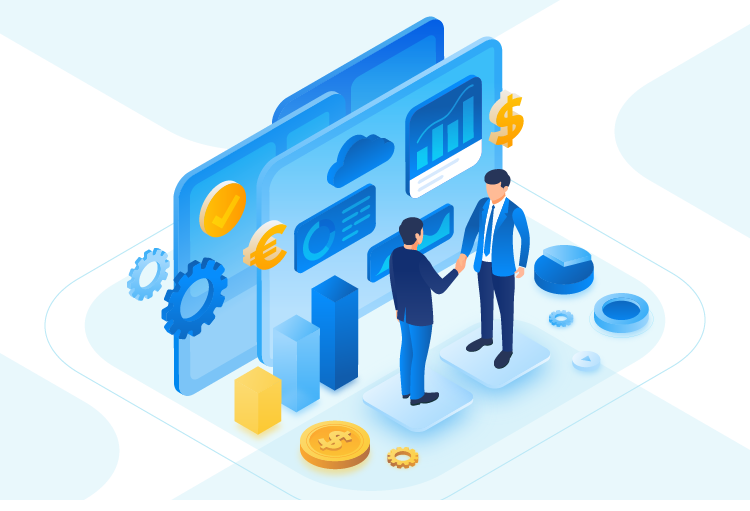How to Positively Impact your Bottom Line via your Supplier Payments
 <a href='https://www.freepik.com/vectors/isometric'>Isometric vector created by pikisuperstar - www.freepik.com</a>
<a href='https://www.freepik.com/vectors/isometric'>Isometric vector created by pikisuperstar - www.freepik.com</a>
Accounts payable (AP) leaders have heard it all.
- A cost center.
- A back-office function.
- A drain on company resources.
These unflattering descriptions of the AP function speak to the costly and inefficient way that most departments have historically gone about processing inbound invoices and paying suppliers.
In fact, controllers surveyed by the Institute of Finance and Management (IOFM) labeled AP as the most costly, labor-intensive, and time-intensive finance and administration (F&A) function.
But it doesn’t have to be this way.
Forward-thinking AP leaders are transforming the function into an income-generating machine.
And they are doing it by rethinking the way that their department pays its suppliers.
The benefits of electronic payments
The volume of payments that businesses make electronically to their suppliers has increased by seven percentage points since the start of the pandemic, and four percent of businesses have quit cutting checks altogether, IOFM finds. Until recently, about half of all B2B payments were made via check.
Paying suppliers electronically provides businesses of all sizes with compelling benefits:
- Lower Costs: Disbursing funds via check costs 30 times more than electronic payments, per the National Automated Clearing House Association (NACHA). Electronic payments eliminate the costs associated with printing checks, including labor, paper, toner, equipment, postage, and couriers. Additionally, consolidating all payments onto a single platform helps manage fees to maintain multiple bank relationships to facilitate different payment methods. Electronic payments also are less likely to result in fraud losses.
- Higher Productivity: Making payments via paper checks requires AP departments to print checks and remittances, chase down approvals, stuff the checks into envelopes, and manually reconcile the checks. But electronic payment solutions enable AP departments to effortlessly disburse funds via any payment method, including ACH and card. Payments are reconciled in real-time. And any information for tax reporting is tracked and generated. Improving productivity enables AP departments to refocus staff on growth-generating activities.
- Enhanced Visibility: Electronic payment solutions provide AP departments with real-time visibility across the payment lifecycle, from initiation through reconciliation. And graphical dashboards displaying metrics enable users to monitor cash flow and corporate spending.
- Less Risk: Electronic payments are less prone to fraud than paper checks. For starters, administrators can restrict access to payment information and activities. And electronic payment solutions often support virtual cards. Virtual cards are plastic-less, meaning there is no physical card that can become lost or stolen. What’s more, virtual card numbers can only be used once, recipients only receive 10 of the 16 digits of a virtual card, and each transaction can be restricted by recipient, amount, and time-period. Improving control over payments significantly reduces the risk of fraud losses that chip away at a company’s profitability.
But the most tantalizing benefit of paying suppliers electronically is how it can generate income.
Generating income from electronic payments
Businesses can free up lots of cash with electronic payments. Here’s how:
Day’s Payable Outstanding
Paying suppliers with virtual cards enables businesses to better manage cash by extending their Day’s Payable Outstanding (DPO), without impacting their existing terms with payment recipients.
Cash-Back Rebates
Businesses can earn cash-back rebates based on the amount of spend they pay with a virtual card. And when you consider that payments to supplies, utilities and most other expenses can be made with a virtual card, a business could potentially earn sizeable cash-back rebates from cards.
Early Payment Discounts
Most suppliers are willing to exchange a discount on the amount due on an invoice for accelerated payment. The earlier the payment, the bigger the discount. With the average early payment discount standing at 2 percent, it doesn’t take long for an AP department start delivering value to the business.
Better Cash Forecasting
The smart financial insights provided by an electronic payment solution enables CFOs and other senior financial executives to better manage their company’s cash. Graphical dashboards display cashflow metrics in real-time. Drill-down capabilities help CFOs identify trends and uncover the source of cashflow issues. And mobile access ensure that CFOs always stay in the loop.
Every business is looking for ways to free up cash on its existing revenue base. Paying suppliers electronically via ACH and virtual card can help transform AP into an income-generating machine.
Interested in reading more about payments? Check out our recent blog post, How To Deliver Value through Better Payments and Cash Flow Management.
